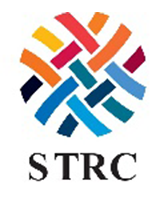Don Alexander, President, Anovotek, LLC Textile products containing performance attributes offer great opportunity in the USA market but typically require global supply chains, large volume commitments and long lead times. Textile fabric finishing in the USA is viable, however finding cutting and sewing capacity in the USA is extremely difficult. Protecting IP when finishing fabrics […]
Category: Abstracts
Evaluating Textiles with Performance Properties
Dr. Roger Barker, Director, Textile Protection and Comfort Center (TPACC) The commercial success of technical fibers, fabrics and finishes depends on their performance in a variety of applications ranging from flame resistant garments to outdoor and sports products. We can evaluate technical textiles as individual components, but there is great value in testing them as […]
Advancements in Digital Printing Machinery
Katelyn Lee, Textile Chemist, Cotton Incorporated According to market surveys, the volume of digitally printed textiles has more than doubled in the past four years. This presentation will review advancements in digital printing machinery that have contributed to the increased productivity and reliability of individual machines and encouraged the rapid growth of digital printing in […]
Potential Applications of Fibrillated Nanocellulose for a Sustainable Textile Coating Technology
Nanofibrillated cellulose (NFC), is an engineered 1D nanomaterial that can be produced from abundantly found natural cellulose sources. Having a very high specific surface area (above 500 m2/g), thixotropic (shear thinning) behavior and reactive structural side groups (cellulosic hydroxyl groups) make NFC a perfect binding material for functional coatings. Cylindrical fiber geometry in NFC facilitates […]
Precision Application Technology for Textile Finishing
This presentation will highlight the adaptation of precision spray technology from a 35-year history in the printing industry to effective use in textile finishing. Through cooperation with textile industry leaders, OEM machine builders and chemistry suppliers, print spray dampening systems have been re-engineered for the purpose of applying softeners, water repellents, other chemistries and remoistening […]
AATCC Test Method 100 (TM 100)
AATCC Test Method 100 (TM 100) is one of a number of standard test methods commonly used for quantitative assessment of antimicrobial textiles performance. However, as currently written the method allows for a number of steps to be conducted with several options and can be problematic. Options for the number of swatches and inoculum carrier […]
Building The Bridge For A Stronger US Supply Chain
SEAMS: “Building The Bridge For A Stronger US Supply Chain” Reshoring is happening within the US Sewn Products industry. But, there are still many obstacles to overcome for the industry to experience significant growth. During this multifaceted presentation, Will Duncan will share his perspective regarding the current state of the Made in the USA movement […]
Fundamentals of Wrinkle Free Finishing & Recent Innovations
Cotton Incorporated: “Fundamentals of Wrinkle Free Finishing & Recent Innovations” This presentation will cover many aspects of wrinkle resistant finishing. It will begin with a short history of wrinkle resistant finishing, followed by causes and prevention of wrinkles. Durable press finish applications and chemistries will be covered. Common tests and expectations for wrinkle resistant fabrics/garments […]
Advanced Thermal Regulation Technology
INCA Technologies: “Advanced Thermal Regulation Technology” This presentation will review Solar Off-Loading Technology® (SOLT). What is SOLT? How does it work? The implications for the market place for SOLT will be discussed. Going beyond SOLT what is the next phase? And lastly, independent confirmation of performance for SOLT will be reviewed.
Plasma Technology for Advanced Functional Finishing
Plasma treatment is a novel method for processing and finishing materials with significant cost and environmental benefits. Plasma, the fourth state of matter, is created when energy is added to gas molecules causing them to excite and dissociate into charged particles. These charged particles can be used to directly modify the surface of materials or […]
